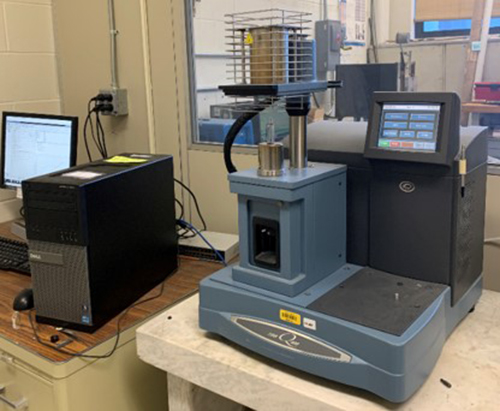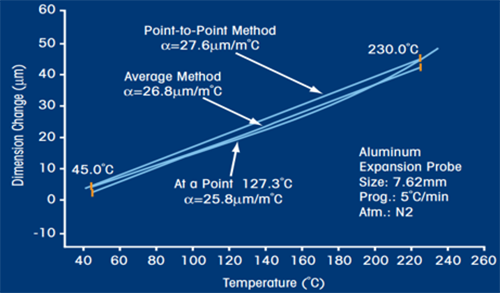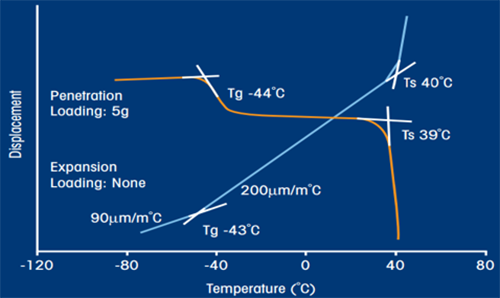TA INSTRUMENTS TMA Q400



Sample Requirements
Maximum Sample Size
- Solid: 26 mm (L) x 10 mm (D)
- Film/fiber: 26 mm (L) x 0.5 mm (T) x 4.7 mm (W)
Summary of Technique
- TMA measures the dimensional changes of a sample as a function of temperature or time while it is subjected to defined mechanical stress or load under conditions of controlled force and atmosphere.
- The modes of measurements includes Compression, Expansion, Penetration, Tension and 3-Point Bending
Information Provided & Detection Limits
- Dimensional Changes
- Expansion coefficient
- Expansion and Shrinkage
- Softening
- Young’s modulus
- Sensitive Tg information as compared with DSC
- Foaming and Swelling characteristics
- Creep behavior
- Phase transitions Curing
- Thermal stability (oxidation, decomposition, delamination)
Detection Limits
- Temperature Range (max): -80 to 1,000°C
- Temperature Precision + /- 1°C
- Measurement Precision +/- 0.1 %
-Sensitivity 15 nm and Frequency 0.01 to 2 Hz
-Force Range 0.001 to 1 N and Resolution 0.001 N
Lab Location and Contact Information
Location: Thermal Analysis, Rheology, and Polymer Processing Lab
Point of Contact: Dennis Ndaya
dennis.ndaya@uconn.edu
860-486-4075